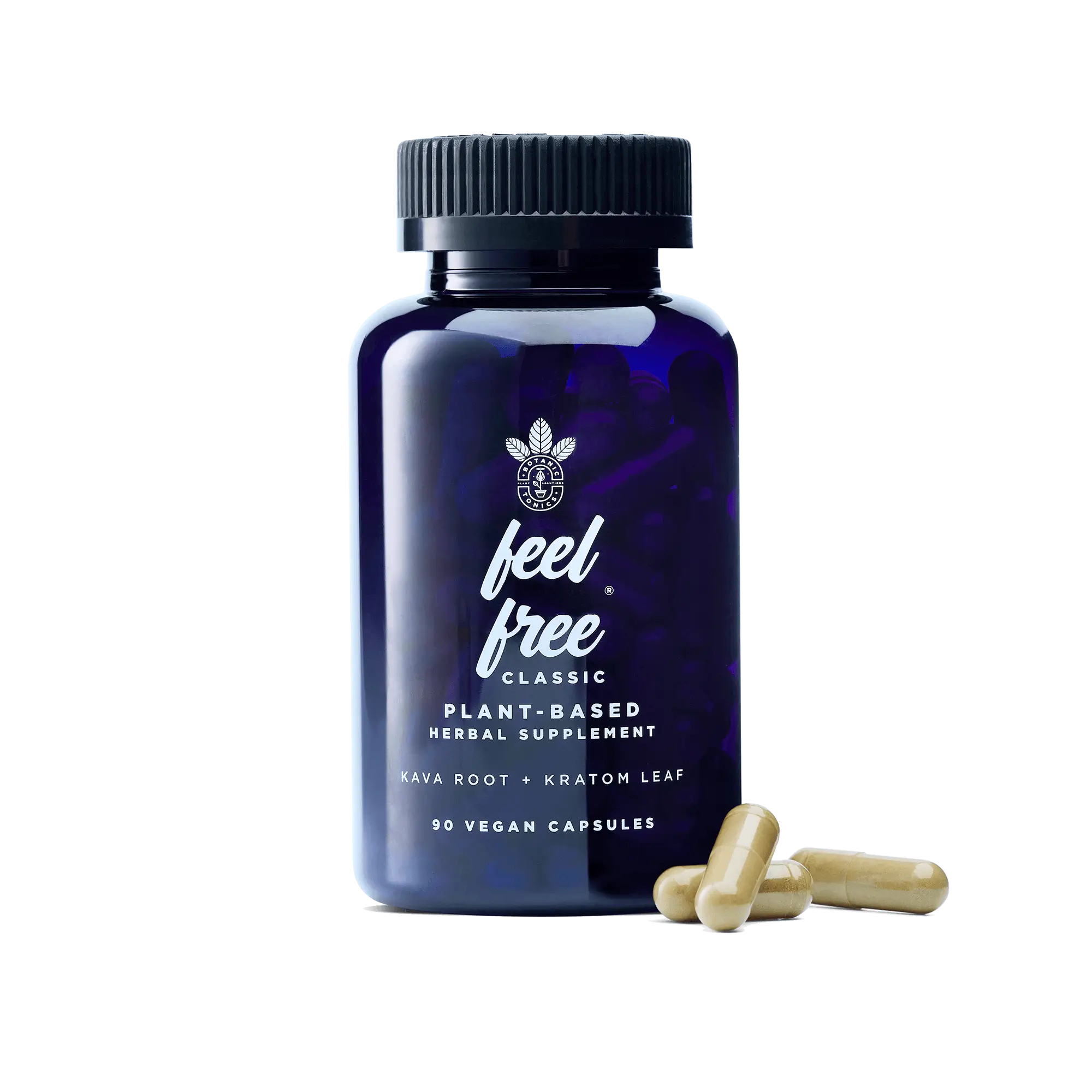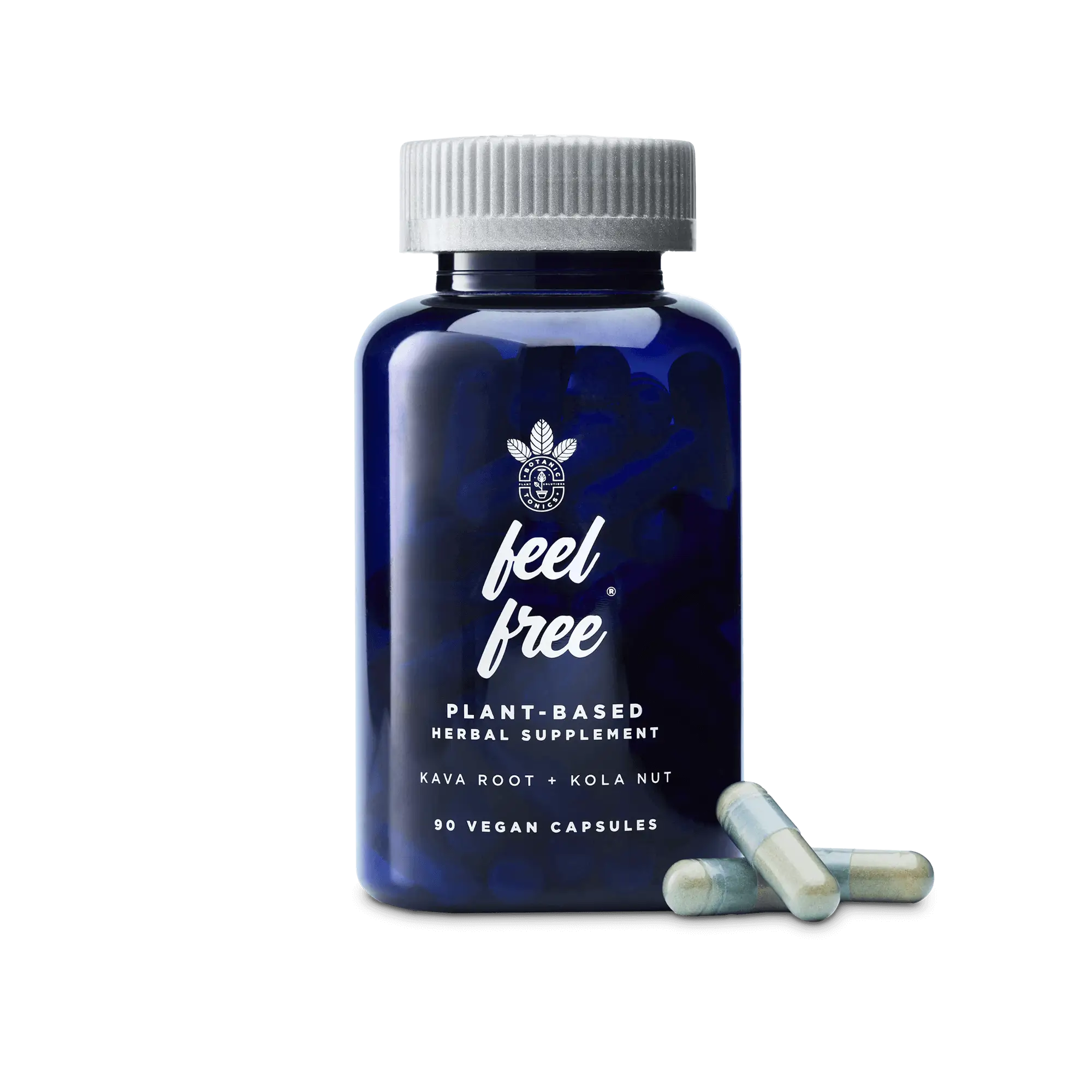Understanding Kava Reverse Tolerance
After hearing rave reviews about a plant-based substance called kava, you might finally be ready to experience its effects for yourself. You may debate whether it’ll make you feel calm and focused or if you’ll metamorphose into the social butterfly of the party.
But then you think to yourself, what if I take it and don’t feel anything? While it is rare, it’s an effect called kava reverse tolerance, and it does happen to new users from time to time.
Before taking your first dose of kava, join us as we learn about kava and its effects so you can have a better understanding of kava reverse tolerance and what to do if it happens to you.
What Is Kava?

Kava, also referred to as kava kava, or by its scientific name Piper methysticum, is a plant that has firmly established roots in the Pacific region of the world. Indigenous people from Polynesia, Micronesia, and Melanesia have utilized kava’s natural properties for centuries, mixing stumps and roots to create special concoctions that induce relaxation and togetherness during cultural ceremonies.[1]
But how exactly does kava elicit those feelings?
The kava root contains chemicals called kavalactones, which may affect the brain and central nervous system. In recent years, studies have shown that kavalactones can promote sleep, relieve some discomfort, and relax your muscles.
How Does Kava Work?

Before we dive into the reverse tolerance of kava, let’s dig into the nitty-gritty of how kava works in the body. Kava root is a depressant, meaning that it slows the messages your brain sends your body.[1]
After consuming kava in one of its various forms, your small intestine absorbs its kavalactones. From there, they’re metabolized by your body’s enzymes. Afterward, kava begins to stimulate dopamine in the brain, the same chemical that elicits satisfaction and other pleasurable feelings.[2]
The result? The calming, mood-boosting effects are often felt by traditional kava users.
What Are the Effects of Kava?
Kava is known for giving individuals a contentment-inducing pick-me-up. But what specific effects can new kava users expect?
Thanks to the active ingredients in kava, users often enjoy one or more benefits of drinking kava:
- Increased sense of calm – Kavalactones may interact with and enhance gamma-aminobutyric acid (GABA) receptors in your brain, which are often associated with providing calming effects.[3]
- Elevated mood – The increase of dopamine caused by kavalactones can contribute to an overall sense of happiness and well-being.[4]
- Relaxed muscles – The active ingredients in kava may work as a muscle relaxer, preventing your nerves from sending pain signals to the brain.[5]
- Help with occasional anxiety – Since kavalactones may enhance GABA receptors, the resulting feeling of calm might be able to reduce feelings of occasional stress or anxiety.
What Is Kava Reverse Tolerance?
While kava is known for making users feel relaxed and focused, not everyone is going to experience all of its potential effects every time they use it. In fact, some people who take kava for the first time don’t notice any of the aforementioned potential benefits at all.
After they’ve waited the typical 15 to 30 minutes for the mood-boosting feelings to kick in, those who experience kava reverse tolerance may simply feel the same as they did before consuming it. That’s because everyone’s body reacts differently to what they put in their bodies—and kava is no different.
The cause of kava reverse tolerance isn’t firmly understood, but experts believe it’s a sign that your body needs more time to absorb the kavalactones in the kava. If you find that you’re among the few who experience a kava kava reverse tolerance, all is not lost. On the contrary!
Many people who don’t feel any effects of the kava plant the first time around often notice significantly stronger effects the next time they try it. For example, you might feel slightly calmer or more social than you expected the second time you try a kava tonic. Oftentimes, users with a kava reverse tolerance notice that the heightened effects they experience the second, third, or even fifth time eventually taper off after a few uses and begin to feel more “normal.”
How Long Will Kava Reverse Tolerance Last?
When it comes to how long kava reverse tolerance will last, there’s no concrete answer. Because everyone’s body reacts differently to it, it may subside after one or two uses, or it may take five or more times before it dissipates. But rest assured, kava reverse tolerance usually doesn’t last forever.
What Is the Right Kava Dose For Me?
If you’ve noticed elevated effects of kava (or none at all) resulting from reverse tolerance, you can try adjusting your dose until the effects level out to a comfortable level.
While there’s no one-size-fits-all kava dosage, studies show that it's generally safe for individuals to consume up to 250 milligrams of kavalactones each day.[6] We recommend splitting that amount into two separate doses of 125 to 130 mg of kavalactones per serving.
While everyone’s ideal dose for kava consumption is different, understanding the following factors will help you determine an appropriate one for you.
The Two Kava Strains
Kava is kava kava, right?
Not exactly. While all strains of kava come from the Piper tree, the type of Piper tree your particular form of kava comes from can completely alter the potency and duration of its potential effects. Below, we break down the differences between the two main types of kava strains:[7]
- Noble kava – The biggest factor that separates noble kava from Tudei kava is the ratio of kavalactones in each strain. This particular type usually contains a lower concentration of kavalactones, resulting in desirable effects, like a sense of calm, relaxation, and focus. Because of this, noble kava is usually the more popular choice of the two. If this is your first kava experience (or even your sixth) and you’re torn on which to try, we suggest sticking with noble kava—unless you’re a confident kava connoisseur.
- Tudei kava – Pronounced two-day, people traditionally used this type of kava for medicinal purposes due to the higher concentration of kavalactones. But with more kavalactones can also come undesirable side effects such as kava nausea, headaches, and exhaustion. The effects associated with Tudei kava also have a longer duration than noble kava, allowing it to live up to its name, “two-day.”
The Many Kava Forms
Another factor to consider when ingesting kava is what form you’ll be taking. There are a wide variety of options to choose from, each offering its own unique set of benefits, including:
- Powder – Kava powder gives you the freedom to customize your dosage to your unique needs. If you’re still tinkering with your ideal dose, this makes it easy to add a sprinkle here or there until you find your kava sweet spot. In its powder form, kava also mixes seamlessly into plenty of your favorite tasty treats, like smoothies and prepared foods.
- Capsules – Short on time? Capsules are a quick and easy way to consume a single serving of kava. Once you find your optimal dose, capsules ensure you’re taking the same amount each time. Moreover, if you’re sensitive to flavors, capsules provide a taste-free alternative to the traditional powder form.
- Tonic – Kava tonics are quickly absorbed into your bloodstream, making them one of the fastest-acting forms. They also come in a variety of flavors, so you can easily mix them in with your favorite beverages or enjoy them on their own for quick kava consumption.
Other Factors to Consider
Aside from the various strains and forms of kava, here are some other questions to consider when determining the right dose for you:
- How fast will your body absorb the kava? Your body absorbs kava through your gut lining, so individuals with healthier gut microbiomes are likely to absorb more kavalactones—and experience more of its effects—than those with less healthy gut flora. Therefore, people with inflammation in the gut may be unable to absorb kavalactones as easily and might benefit from a larger dose of kava.
- Do you have a fast or slow metabolism? Just as individuals differ in their absorption levels, they also vary in terms of their metabolic rates. People who metabolize kava more quickly may notice that the effects don’t last as long as someone with a slower metabolism. Therefore, those who metabolize more slowly may prefer a smaller dose.
- How is the quality of your product? Choosing a product with quality ingredients ensures that your kava will perform as stated (unless you find yourself with a case of kava reverse tolerance). In that case, your body should level itself out within a few doses so you can enjoy its effects as intended.
Experience the Relaxing Effects of Kava with feel free

When you’re ready to experience the all-natural bliss that the kava plant provides, remember that every individual’s journey is different. But with the right brand of kava at your side, you can rest assured that you’re consuming high-quality ingredients crafted to give you the ultimate kava experience.
Enter Botanic Tonics, where you’ll find the feel free CLASSIC tonic formulated with kava root and leaf kratom that will provide you with a boost of energy, focus, and relaxation. Whether you’re prepping for your next big project or looking for a social lift during your company’s next gathering, treat yourself to a kava with all of the perks and none of the pits.
Browse our selection to find your perfect blend.
Sources:
- ADF. Alcohol and Drug Foundation. https://adf.org.au/drug-facts/kava/
- Health Direct. Dopamine. https://www.healthdirect.gov.au/dopamine#
- Science Direct. Diet and Depression: From Epidemiology to Novel Therapeutics. https://www.sciencedirect.com/topics/neuroscience/kavalactones
- NIH. Enhanced cognitive performance and cheerful mood by standardized extracts of Piper methysticum (Kava-kava). https://pubmed.ncbi.nlm.nih.gov/15181652/#
- University of Rochester Medical Center. Kava Kava. https://www.urmc.rochester.edu/encyclopedia/content.aspx?contenttypeid=19&contentid=KavaKava
- NIH. Kava as a Clinical Nutrient: Promises and Challenges. https://www.ncbi.nlm.nih.gov/pmc/articles/PMC7600512/
- Kava Guides. Noble Kava vs. Tudei Kava: What Exactly Is The Difference?
















